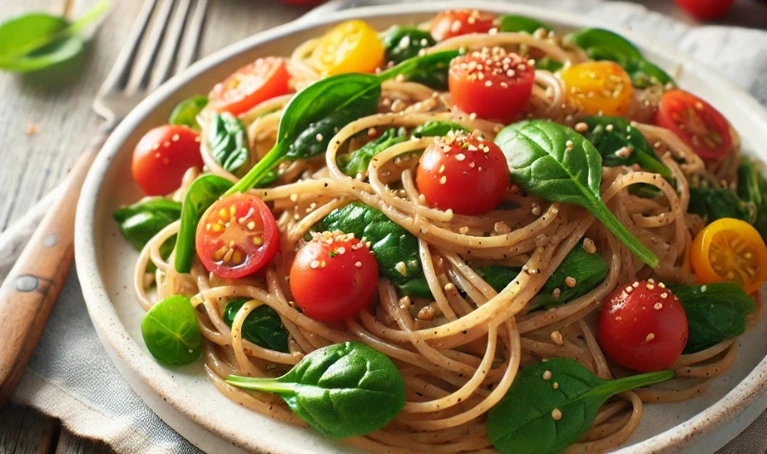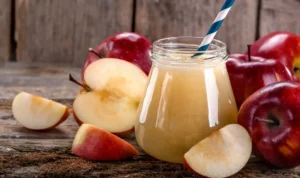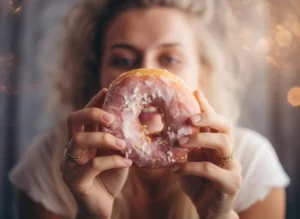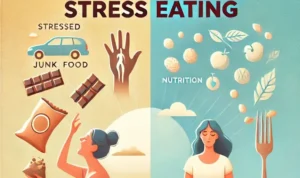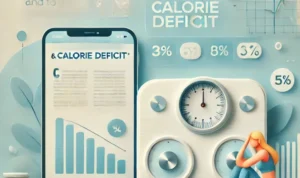Table of Contents
ToggleCan Pasta Be Part of a Weight Loss Diet?
When it comes to weight loss, many people think they need to cut out pasta completely. Carbohydrates, in general, often get a bad reputation for causing weight gain. However, pasta can be included in a balanced diet without sabotaging your goals. In fact, with the right choices, pasta can actually support a healthy lifestyle and even help you stay on track with weight loss. By choosing the right types of pasta, focusing on portion control, and pairing it with nutrient-rich ingredients, you can enjoy your favorite pasta dishes without the guilt. Let’s dive into how pasta can work in a weight-loss diet and help you feel satisfied while still working toward your goals.
Is Pasta Good for Weight Loss?
Yes, pasta can absolutely fit into a weight-loss diet when consumed mindfully. The key to enjoying pasta without derailing your progress is all about moderation and smart preparation. While pasta itself contains carbohydrates, which are often associated with weight gain, it’s the portion size, type of pasta, and ingredients that matter most. By using whole grains, adding plenty of vegetables, and sticking to light sauces, you can enjoy pasta that’s both delicious and supportive of your weight loss journey. Pasta can give you the energy you need to stay active, keeping you full and satisfied without extra calories.
Benefits of Eating Pasta When Trying to Lose Weight
Provides Lasting Energy
Pasta is a source of complex carbohydrates, meaning it provides energy slowly and steadily throughout the day. This steady release of energy helps prevent energy crashes and keeps you feeling satisfied for longer. When your body has a consistent source of energy, you’re less likely to reach for snacks or high-calorie treats between meals. This can make a significant difference when you’re trying to reduce your calorie intake. Pasta can be especially beneficial for those with active lifestyles, as it helps fuel workouts and daily activities without leaving you feeling overly full.
Also Read: High Protein Vegan Snacks
Supports Muscle Recovery After Exercise
If you’re combining your weight-loss efforts with exercise, pasta can be an excellent addition to your post-workout meals. After exercising, your body needs carbohydrates to help replenish glycogen stores, which are crucial for muscle recovery. The carbohydrates in pasta work effectively in this regard, especially when paired with protein-rich foods like chicken, tofu, or legumes. This combination of carbs and protein can help repair muscle tissues, allowing you to recover faster and get back to your fitness routine without feeling overly fatigued. Proper muscle recovery also helps you stay consistent with workouts, which is essential for long-term weight loss.
High in Fiber with Whole Grain Options
Choosing whole-grain pasta instead of refined pasta is a smart choice for weight loss, as it provides a good amount of dietary fiber. Fiber aids digestion, supports healthy bowel movements, and helps you feel full for longer periods. This can reduce the tendency to overeat or snack between meals, both of which can be challenges when trying to lose weight. Additionally, fiber helps to stabilize blood sugar levels, preventing the blood sugar spikes and crashes that can lead to cravings. When pasta is high in fiber, it supports healthy eating habits and a more controlled appetite.
Helps You Feel Full and Satisfied
One of the biggest challenges in weight loss is staying full and satisfied to avoid overeating. Pasta can be a very satisfying meal, especially when combined with vegetables and lean proteins. This combination adds bulk and nutrients to your meal without a lot of extra calories, allowing you to feel full and enjoy your meal without overdoing it. When you feel satisfied after meals, you’re more likely to stick to your eating plan and avoid unnecessary snacks. This makes pasta a great option for weight loss, as it keeps you on track without feeling deprived.
Easy to Combine with Balanced, Nutrient-Dense Ingredients
Pasta is a versatile base that can easily be combined with a variety of nutrient-dense ingredients, from vegetables and lean proteins to healthy fats like olive oil. These ingredients not only enhance the flavor but also add essential vitamins and minerals that your body needs for good health. By combining pasta with low-calorie, high-nutrient foods, you can create a balanced and filling meal that supports your weight loss goals. This makes pasta a convenient option for those looking to eat healthy without sacrificing taste or spending too much time on meal prep.
Low Glycemic Index in Whole Grain and Legume-Based Options
Whole grain and legume-based pastas, such as those made from chickpeas or lentils, have a lower glycemic index compared to traditional pasta. This means they cause a slower, more gradual increase in blood sugar levels, which can help control hunger and prevent cravings. Low-glycemic foods are especially useful for weight loss because they keep you feeling steady and satisfied, helping you avoid the desire for sugary or high-calorie foods. Choosing low-glycemic pasta options can be an effective strategy to support steady energy levels and a more consistent appetite throughout the day.
Helpful for you: Best Time to Eat Yogurt
Pairs Well with Low-Calorie, High-Volume Ingredients
Another benefit of pasta for weight loss is that it pairs wonderfully with low-calorie, high-volume foods like leafy greens, tomatoes, zucchini, and other vegetables. Adding a generous amount of vegetables to your pasta not only boosts the nutritional content of your meal but also helps increase the portion size without a lot of added calories. High-volume meals can make you feel like you’re eating more, which can reduce the desire to eat additional snacks or second servings. This approach allows you to feel more satisfied while staying within a calorie range that supports weight loss.
Convenient and Quick to Prepare
One of the best things about pasta is how quick and easy it is to prepare. Having convenient, healthy meals can make a big difference when you’re busy but still want to stay on track with your diet. When you can make a nutritious pasta dish in under 20 minutes, you’re less likely to resort to high-calorie takeout options, which can disrupt your weight-loss efforts. This convenience makes pasta a practical choice for meal planning and can help you stick to your goals even on busy days.
Offers High-Protein Alternatives for Extra Satiety
High-protein pasta options, such as those made from lentils, chickpeas, or black beans, are becoming more popular. These pastas provide extra protein, which is essential for muscle health, satiety, and metabolism support. The added protein in these alternatives can help you feel fuller for longer and give your body the building blocks it needs to repair and grow lean muscle. Adding more protein to your diet is a proven way to boost metabolism and curb cravings, making high-protein pasta an excellent choice for those looking to lose weight without feeling hungry.
Dig Deeper: What is the Best Time to Eat Bananas
A Budget-Friendly, Nutritious Option
Pasta is a relatively affordable food, which makes it accessible for most people looking to eat healthy without overspending. Because pasta is so budget-friendly, it’s easy to incorporate into a balanced, nutritious diet. By pairing pasta with seasonal vegetables and affordable protein options, you can create delicious and satisfying meals without the need for expensive ingredients or specialty diet foods. This affordability allows you to stick to healthy eating habits long-term, which is essential for sustained weight loss and overall wellness.
Which Pasta Shape Has the Least Carbs?
When it comes to carb content, the shape of pasta doesn’t matter much. However, thinner shapes like angel hair or spaghetti might have slightly fewer carbs because they’re usually less dense. If you’re looking to reduce carbs, try vegetable-based alternatives like zucchini noodles, spaghetti squash, or low-carb pastas made from legumes such as chickpeas or lentils. These alternatives provide extra fiber and protein while cutting back on carbs, making them a great choice for weight loss.
Best Time to Eat Pasta for Weight Loss
The timing of your pasta meal can influence how it affects your weight-loss efforts. Here are the ideal times to enjoy pasta while keeping your goals in mind:
- Lunch or Early Dinner: Eating pasta earlier in the day, like for lunch or an early dinner, gives your body more time to use the carbs for energy. This can help avoid storing carbs as fat and prevent a heavy feeling before bedtime.
- After Exercise: Pasta can be an ideal post-workout meal. Carbs are especially beneficial after exercise because your body uses them to replenish glycogen stores in your muscles. Pair your pasta with a lean protein for an ideal post-workout recovery meal.
Must Read: Best Time to Eat Carbs
Best Types of Pasta for Weight Loss
Choosing the right type of pasta can make a big difference for weight loss. Here are some types to consider:
- Gluten-Free Options: Gluten-free pastas made from quinoa or brown rice can offer similar nutritional benefits, especially for those with gluten sensitivities. These are often rich in fiber and protein as well.
- Whole Wheat Pasta: This type is high in fiber, which aids digestion and helps you feel fuller longer.
- Legume-Based Pasta: Made from chickpeas, lentils, or black beans, legume-based pastas are high in protein and fiber, offering a lower-carb, higher-protein option that keeps you full.
- Vegetable-Based Pasta: Pasta made from vegetables like spinach, carrots, or zucchini provides additional nutrients and may have fewer calories than traditional pasta.
Conclusion:
With mindful choices, pasta can definitely be part of a weight-loss diet. By choosing whole grain or legume-based options, controlling portions, and pairing pasta with nutrient-dense, low-calorie ingredients, you can enjoy satisfying meals without feeling like you’re missing out. Eating pasta at strategic times and focusing on healthier toppings are key steps to making pasta work for your weight-loss journey. With a little planning, you can savor your favorite pasta dishes while still working toward your fitness and health goals.
FAQs About Pasta and Weight Loss
Can I eat pasta daily while losing weight?
Eating pasta every day might make it hard to maintain a calorie deficit. Try enjoying pasta a few times a week with veggies and lean proteins.
Is gluten-free pasta better for weight loss?
Gluten-free pasta is not necessarily better unless you have gluten sensitivities. Portion control and healthy ingredients matter more.
What’s a good portion for weight loss?
About half a cup of cooked pasta is a good portion size, paired with veggies and protein for balance.
Does eating pasta cause weight gain?
Pasta itself doesn’t cause weight gain. Overeating and high-calorie toppings are more likely to contribute to weight gain.
Are low-calorie pasta options available?
Yes, alternatives like zucchini noodles, spaghetti squash, and shirataki noodles are low in calories and ideal for weight loss.
Is pasta okay for a low-carb diet?
For low-carb diets, stick to vegetable-based or low-carb pasta options made from legumes.
Can pasta help after workouts?
Yes, the carbs in pasta help replenish glycogen stores, making it great for post-workout recovery.
Is whole wheat pasta healthier than regular pasta?
Whole wheat pasta has more fiber and nutrients, making it a better option for weight loss.
What’s the healthiest way to eat pasta?
Eating pasta with vegetables, lean proteins, and light sauces is the healthiest way to enjoy it.
Can I eat pasta at night?
If eating pasta at night, keep portions small and avoid heavy sauces to prevent feeling too full before bed.
